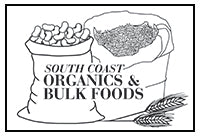Dark Chocolate and Heavy Metals
Hello everyone! Yet another concern about the food we eat.
The following information is something that I gleaned from Equal Exchange. I will try to post more as I find it, but start with this, and hopefully it will help us all understand the sourcing of our food.
Testing:
We work with our manufacturing partners in an ongoing way to have test data and information on cadmium and lead so that we can ensure our products are safe. In 2018, Equal Exchange took the step of opting into a settlement for heavy metals in chocolate products sold in California. The levels set in this agreement for cadmium and lead are similar to international standards, which Equal Exchange had been using as a reference, due to the lack of federal guidance in the US. As part of this settlement, we work diligently to be in compliance with the agreement and sell products that are under these limits; and we can confidently state that our chocolate products are below these levels.
What this issue means for farmers:
We want people to have a wider understanding of this issue and what it means for small-scale farmers. Cadmium is a naturally occurring element. Research shows that when found in chocolate, this element is naturally taken up through the soil by cacao trees. This is not unique to chocolate. Heavy metals are naturally occurring in our world, and found in many other foods such as grains, potatoes, rice, leafy greens, tomatoes, cereals, and more. Cadmium is often more prevalent in soil in Latin America, which is where we source most of our cacao beans, mainly due to the volcanic nature of the soil. This means that these trace levels end up in cacao beans and chocolate through no fault of the farmer. Equal Exchange’s mission is to change the terms of trade for small-scale farmers who are so often the people in the supply chain that face the most risks, the most barriers, and have the least access to support. The current “best” solution we have heard proposed by researchers of this issue is for buyers to source from locations where there is less cadmium in the soil. This would be a devastating solution for small-scale farmers and their families, who live in communities where cacao is often the best path to a viable livelihood. We will not abandon our partners, but rather, believe there needs to be better long-term solutions that are implemented in a way where farmers are not once again the ones who bear the largest consequences. Our other concern is that this will drive more purchases away from Latin America and into Africa, where the dominant model perpetuated by the conventional chocolate industry is based on poverty wages, child labor, and environmental destruction stemming from deforestation and pesticide use.
Equal Exchange will continue to engage in this issue in a way that meets the needs of our customers and our farmer partners. We hope this information gives you the confidence you seek in our chocolate products but respect whatever purchasing decisions you choose to make.
